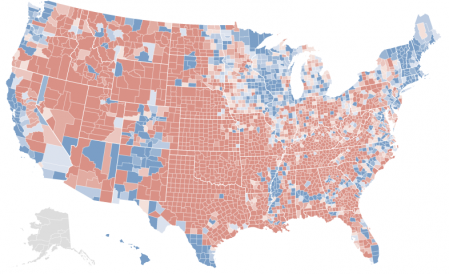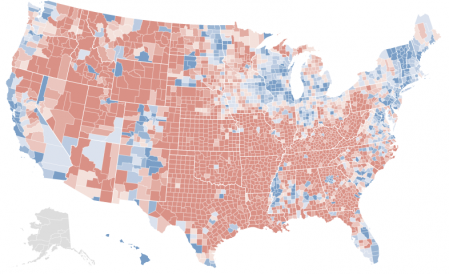This is the second and third parts in a series of blogs Nourishing the Planet will be writing about workers in the food system. Nourishing the Planet research intern Ronit Ridberg recently spoke with Erik Nicholson, National VP of the United Farm Workers of America. In the first part of this two-part interview, Erik talks about the global agricultural system and the role American consumers play in it. Cross posted from Worldwatch Institute’s Nourishing the Planet.
 Name: Erik Nicholson
Name: Erik Nicholson
Affiliation: National Vice President, United Farm Workers of America; International director of the Guest Worker Membership Program. Founded in 1962 by Cesar Chavez, the United Farm Workers of America is the nation’s first successful and largest farm workers union currently active in 10 states.
Location: Tacoma, Washington
Bio: Erik Nicholson has worked extensively on pesticide issues affecting farm workers and their families as well as child labor, housing, consumer outreach, education and legislative issues. He currently serves as one of two national farm worker representatives to the Environmental Protection Agency‘s national pesticide advisory committee, the Pesticide Program Dialog Committee.
Nicholson led the two-and-a-half year organizing campaign at the national guest worker labor-contracting firm Global Horizons, resulting in the first national guest worker union contract in the history of the United States. He currently is working to develop an international infrastructure to better advocate on behalf of guest workers.
Can you please contextualize the work you do, in what has become a global system of agriculture?
We are now importing the majority of the food we eat. The overwhelming majority of workers who harvest the food we eat in the United States are not from this country. And many if not most of the workers employed in the fields in the United States are displaced farmers from their own countries (mostly Mexico but not exclusively.) So we’re seeing that many of the same pressures and challenges that are facing farmers in the US are the very same ones that are displacing small farmers in the global South and resulting in them coming in search of employment to the United States, Canada, Australia, and European Union. At the same time, farmers and sometimes their spouses in the US are looking for second jobs in more urban settings.
When Vietnam entered the global market with coffee we saw an unprecedented exodus of coffee farmers out of eastern Mexico. When NAFTA was signed, mass exodus of corn farmers – so we see a direct correlation between these international trade policies and agricultural practices and kind of the global crisis of agriculture that we’re facing.
Within that context you look at agriculture in the United States and pretty much anyone born in this country has no aspirations to work in the fields. And I think if we’re honest with ourselves, the reason is because we all know the conditions are not good, the pay is pretty bad, and there’s really no benefits. As a result we have depended on immigrant workers to come up and do the work that we haven’t wanted to do. And so if you look at the history of the United Farm Workers, we’ve had workers literally from around the world as members – from Vietnam, Thailand, the Philippines, Yemen, African Americans and of course, Mexicans, Central Americans, and the internationalization of the work-force continues. We now have workers working under contract from Somalia, Sudan, Kenya, and it’s very much become a global workforce that is harvesting the food we eat.
UFW recently hosted an international gathering of farm workers from 14 different countries. Can you share some of your impressions of that gathering?
It was just amazing to have people who are doing the same work we’ve been doing for fifty years in the United States, together in the same room. We were in awe of just how bad it is out there. We think it’s bad here, and then you talk to folks from Ecuador or Peru, who come to the States telling us, “What are you guys complaining about? You don’t know the half of it.” And so as we really compared notes, the contexts were different but it was appalling just how bad it is for farm workers across the world. That was sobering.
But at the same time, it was tremendously exciting to meet people who give a damn, and who are actually out there in the trenches trying to make a difference. It was a very lively conversation. We did a lot of work just getting to know each other and the different contexts in which we’re working and actively looking for ways to collaborate. One of the first things that came to mind for all of us was that we need to educate the world about how bad it is for farm workers and why everyone who eats should care! We’ve established relationships that have never existed before, and are actively working to build upon those to see what we can do for workers globally.
What do the popular “food movements” of today have to do with farm workers’ rights, and how can individual consumers get more involved in supporting change around the world?
Just look at the whole conversation about “sustainability”, the Buy Local fad, and that was preceded by the organic fad, and the whole mythology that was erected around those concepts that included somehow that workers were going to be treated better. When the reality is there are local farmers I would never ever in a million years buy something from, and gladly pay a premium to have it flown in 2000 miles because I know workers are treated well. And while workers aren’t exposed to as many toxins in organics, there are still toxins in the organic world that are allowed, and organics does nothing on the labor front. So I think we need to make sure that labor is part of the equation.
I’ve found that people are frequently reluctant to dirty their hands because you’re dealing with three very politically charged issues: the sustainability of small farmers, immigration policy, and labor. If you really want to stand with the people who are out there right now in the field, rather than projecting a better future theoretically, find out who’s picking your food and how you can stand with them. Boycott Arizona and let your voice be heard that those types of laws are unacceptable. Support immigration reform, so we can provide legal status to the hundreds of thousands of people that put food on our table. And then really be an advocate to help support the people that are here, now, in their struggle to make a better life for themselves.
It is incumbent on us as people who care about food and care about the viability of small farmers, to understand that these realities are the same for hundreds if not millions of people worldwide.
 For a farmer in a hot country like Sudan, a big harvest can end up being just a big waste. A fresh tomato off the vine will only last about 2 days in the stifling heat, while carrots and okra might last only 4 days. Despite being perfectly capable of producing abundant harvests, without any means to store and preserve crops, farmers in Sudan are at risk for hunger and starvation. They are also losing money that could be made by selling surplus produce at markets if they had a way to keep vegetables longer.
For a farmer in a hot country like Sudan, a big harvest can end up being just a big waste. A fresh tomato off the vine will only last about 2 days in the stifling heat, while carrots and okra might last only 4 days. Despite being perfectly capable of producing abundant harvests, without any means to store and preserve crops, farmers in Sudan are at risk for hunger and starvation. They are also losing money that could be made by selling surplus produce at markets if they had a way to keep vegetables longer. Leaving Gambia’s capital city, Banjul, you’ll find a group of women standing road side offering up oysters for 15 dalasis a cup, or about 55 cents for approximately 75 pieces of oyster meat. These women in the community have been harvesting oysters from the extensive mangrove wetlands of Gambia for decades. Much of the harvesting is concentrated in Tanbi National Park, a Ramsar site, or wetland of international importance. Surprisingly, the mangroves themselves have undergone little change during the last thirty years, even as the population of the country, increasingly concentrated around Tanbi in the Greater Banjul Area, more than doubled during that period.
Leaving Gambia’s capital city, Banjul, you’ll find a group of women standing road side offering up oysters for 15 dalasis a cup, or about 55 cents for approximately 75 pieces of oyster meat. These women in the community have been harvesting oysters from the extensive mangrove wetlands of Gambia for decades. Much of the harvesting is concentrated in Tanbi National Park, a Ramsar site, or wetland of international importance. Surprisingly, the mangroves themselves have undergone little change during the last thirty years, even as the population of the country, increasingly concentrated around Tanbi in the Greater Banjul Area, more than doubled during that period. In 2007 a group of oyster harvesters organized themselves into a producer association called TRY Women’s Oyster Harvesting Association. The first members decided to call the organization TRY, because it was an effort to do just that – try to improve the situation for oyster harvesters without much certainty that their efforts would pay off. After some initial success fund raising to buy boats, membership in TRY grew rapidly from fourteen women in just one village to 500 oyster harvesters from fifteen communities across the Greater Banjul Area today. This growth was no small feat. Although the women are all Jola, a minority ethnic group in Gambia, they are divided into different sects with distinct languages and heritages. Through TRY, the harvesters have been able to put aside these differences and work as a cohesive community making decisions by consensus and collectively prioritizing needs.
In 2007 a group of oyster harvesters organized themselves into a producer association called TRY Women’s Oyster Harvesting Association. The first members decided to call the organization TRY, because it was an effort to do just that – try to improve the situation for oyster harvesters without much certainty that their efforts would pay off. After some initial success fund raising to buy boats, membership in TRY grew rapidly from fourteen women in just one village to 500 oyster harvesters from fifteen communities across the Greater Banjul Area today. This growth was no small feat. Although the women are all Jola, a minority ethnic group in Gambia, they are divided into different sects with distinct languages and heritages. Through TRY, the harvesters have been able to put aside these differences and work as a cohesive community making decisions by consensus and collectively prioritizing needs. The women are also adopting practices to ensure that Tanbi remains a healthy mangrove ecosystem. Harvesters are learning about the ecological importance of mangroves and how destructive practices like cutting roots with machetes to collect the attached oysters damages the capacity of the ecosystem to support oyster populations and fish nurseries. They are sharing these lessons with one another and the Gambian public through short plays demonstrating proper harvesting techniques and sharing information about mangrove ecology. In a country stretched for resources, the oyster harvesters are also helping the Department of Parks and Wildlife Management police the wetlands by reporting observations of illegal fuel wood harvesting to local officials. The women are experimenting with shellfish aquaculture to help relieve pressure on wild stocks and limit the harm to mangroves.
The women are also adopting practices to ensure that Tanbi remains a healthy mangrove ecosystem. Harvesters are learning about the ecological importance of mangroves and how destructive practices like cutting roots with machetes to collect the attached oysters damages the capacity of the ecosystem to support oyster populations and fish nurseries. They are sharing these lessons with one another and the Gambian public through short plays demonstrating proper harvesting techniques and sharing information about mangrove ecology. In a country stretched for resources, the oyster harvesters are also helping the Department of Parks and Wildlife Management police the wetlands by reporting observations of illegal fuel wood harvesting to local officials. The women are experimenting with shellfish aquaculture to help relieve pressure on wild stocks and limit the harm to mangroves.
 Bio: Raj Patel has degrees from the University of Oxford, the London School of Economics and Cornell University, has worked for the World Bank and WTO, and protested against them around the world. He has testified about the causes of the global food crisis to the US House Financial Services Committee and is an Advisor to the United Nations Special Rapporteur on the Right to Food. In addition to numerous scholarly publications, he regularly writes for The Guardian, and has contributed to the LA Times, NYTimes.com, The San Francisco Chronicle, The Mail on Sunday, and The Observer. He is the author of Stuffed and Starved:
Bio: Raj Patel has degrees from the University of Oxford, the London School of Economics and Cornell University, has worked for the World Bank and WTO, and protested against them around the world. He has testified about the causes of the global food crisis to the US House Financial Services Committee and is an Advisor to the United Nations Special Rapporteur on the Right to Food. In addition to numerous scholarly publications, he regularly writes for The Guardian, and has contributed to the LA Times, NYTimes.com, The San Francisco Chronicle, The Mail on Sunday, and The Observer. He is the author of Stuffed and Starved: 

 Every year, 5 million children worldwide die from malnutrition-related causes, including immune-system deficiency, increased risk of infection, decreased bone density, and starvation. But a variety of local efforts are hoping to turn things around.
Every year, 5 million children worldwide die from malnutrition-related causes, including immune-system deficiency, increased risk of infection, decreased bone density, and starvation. But a variety of local efforts are hoping to turn things around.
 Name: Erik Nicholson
Name: Erik Nicholson